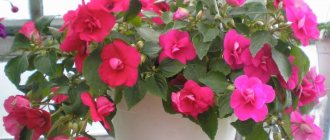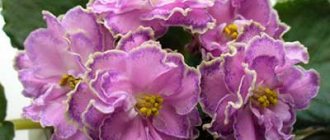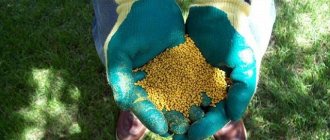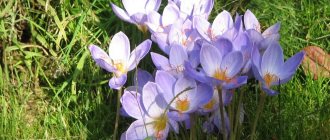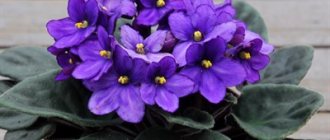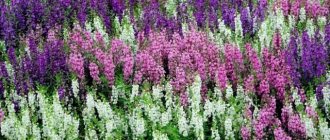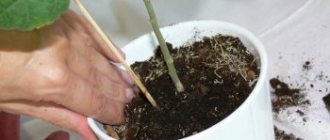The best way to create coziness and beauty in your home is to decorate it with living plants. Indoor flowers blooming all year round on the windowsill, turning even a modest home into a bright, lush oasis. The healing properties of green spaces are confirmed by scientists all over the world. They saturate the air with oxygen, neutralize harmful radiation, protect against colds and depression, and simply give joy.
The modern world of indoor flowers is extremely diverse. Conventionally, they can be divided into two groups: unpretentious, capable of blooming in dry and shaded rooms, and capricious, demanding of light and watering.
Geranium
In the photo - indoor geranium
Indoor geranium or pelargonium is known as “grandmother’s” home flower, a symbol of comfort. It tolerates dry air and lack of moisture very well. Its place is on the south window, where there is a lot of sun and warmth. In the shade, the stems stretch upward, and dense bright red and pink-white caps rise above the lush green foliage. Geranium blooms long and luxuriantly, while repelling insects and purifying the air of pathogenic microbes.
It is not recommended to place the flower next to the bed.
Pachistachis
An unpretentious house plant that can bloom all year round. Its yellow flowers look like candles. Pachistachis loves abundant watering and moist air. It also requires regular pruning. Comfortable air temperature for the plant is from +20 to +26 degrees. At low temperatures, Pachistachis sheds its leaves, and at elevated temperatures, it stretches out.
Begonia
In the photo - ever-blooming begonia
A fabulous “scarlet flower” on the windowsill. The beautifully blooming gifts of the flora amaze with their variety of shades: from apricot lace and yellow fringe to pearl white and peach tones. Luxurious, double flowers reach a diameter of 6-8 cm. Begonia is placed in a well-lit place, but it is better if it is diffused light. In winter, additional lighting is required. Begonia is moisture-loving. In extreme heat, the soil should be moistened daily, and in the cold season, watering should be reduced to a minimum.
Kalanchoe
In the photo - Kalanchoe
A newcomer from the distant and hot Madagascar, Kalanchoe is considered one of the most unassuming. Accustomed to hot climates and dry soil, the tropical guest can go without watering for a long time. On the contrary, excess moisture is extremely undesirable, and watering it once a month is sufficient. It is necessary to distinguish between medicinal and decorative varieties. Flower growers choose blooming Kalanchoe, all covered with small, bright flowers, pleasing to the eye during the cold winter months.
Orchid
We are talking about such a representative as phalaenopsis. This chic exotic flower will delight you with long-lasting flowering. It is quite undemanding in care: it prefers the eastern part of the house, diffused light, and infrequent watering. It will be enough to water it once a week with a small amount of water, but always in the morning. At the same time, they look at the condition of the soil: it should be completely dry.
Decembrist
Decembrist white
The name speaks for itself. Possessing a persistent, “Nordic” character, the Decembrist lives up to 20 years and in the bitterest frosts amazes with the brightness of its colors. Pink, purple, yellow, crimson inflorescences have an unusual shape with curly curls and delicate long stamens. Spreading bushes with hanging clusters turn the windowsill into a blooming winter garden.
Abutilone or indoor maple
The plant received its name because of its leaves, which are similar to maple leaves. Abutilon blooms from spring to autumn. Its flowers can be: funnel-shaped, bell-shaped or wheel-shaped. Flower color: white, pink, red, yellow.
Indoor maple will bloom in the autumn-winter period if it is provided with additional lighting. You should also fertilize the plant with nitrogen or phosphorus fertilizers.
Primrose
Primrose indoor
Happiness is on the window. A beautiful indoor flower is rightly called a living antidepressant. It's hard to take your eyes off the stunning heavenly, amethyst or lush carmine-red petals. It is demanding of warmth and light, but does not like direct sunlight. The plant is best placed on the north and west sides. Low temperatures are not scary for him; on the contrary, 16-20° is quite enough. Water the primrose carefully, trying not to get it on the foliage as the soil dries. Spraying is excluded. To prevent water from stagnating, drainage should be provided.
Anthurium
Anthurium
An elegant aristocrat with leaves covered with decorative patterns and as if smeared with wax. Small flowers are collected in a yellow “cob” and surrounded by a bract - a scarlet, snow-white or lilac veil. Anthurium is shade-tolerant, can bloom for 2-3 months in a row, and cut flowering stems remain fresh for several weeks. Place it on a western or eastern window, avoiding direct sun. However, on short winter days additional artificial lighting is required. Drafts and temperature changes are excluded. Water moderately, making sure that the soil has time to dry. Use soft, settled water.
Spathiphyllum
Spathiphyllum
The complexity of the name is compensated by the ease of care. Ideal for beginner gardeners. Spathiphyllum tolerates long periods of lack of moisture and lack of sun. Snow-white sails on a green background resemble calla lilies in a wedding bouquet. They delight owners all year round, but bloom especially wildly in the summer.
Balsam
Balzin or “Vanka wet”
Better known as “Vanka wet”. It grows well even in the shade and loves water very much. Resistant to dry air, balsam grows well in any conditions, including kitchens and cool northern windows. The spreading, lush bush is literally strewn with small flowers, similar to roses, camellia or double carnations, depending on the variety.
Chinese rose
Hibiscus Gabriel
The correct name is hibiscus. A magnificent beauty with large, fiery red, satin white or sunny orange inflorescences. The buds open one after another, live only one day, dry out, and new petals immediately bloom in their place. It gives the impression of constant flowering. Among indoor plants that bloom all year round, hibiscus is one of the most spectacular. In the summer season it is watered in the morning and evening. The plant is light-loving, grows quickly and needs space. To give shape and slow down growth, the tops are periodically trimmed.
Summer perennials
This group includes flowers of various shades. The variety of species makes it easy to create original floral ensembles that do not require constant attention from the gardener.
- Lily is winter-hardy and not susceptible to diseases. The shape of flowers can be funnel-shaped, tubular, turban-shaped, star-shaped. cup-shaped.
- Peony received the title of “king of flowers” for a reason. A large, hardy flower with dense, carved, glossy leaves outshines everyone around in its beauty.
- Iris (Iris) - the name of this luxurious flower was given by the goddess of the rainbow - Iris. Bearded irises are particularly popular and make memorable holiday bouquets.
- Pansies are delicate, fragrant single flowers up to 10 cm in diameter. These unpretentious perennial flowers are divided into 15 varieties, differing in shape, flowering time, size and color.
Summer perennial flowers remain decorative until late autumn, reminiscent of the hottest time of the year.
Summer perennial flowers - photo
Violet
Variegated violet
Constantly blooming violets are a favorite of women. At floristic exhibitions, even people far from floriculture do not remain indifferent to the beauty of inflorescences. The petals surprise with their variety of shapes: simple, terry, corrugated, star-shaped, edged. The color range ranges from delicate lilac to thick violet. To admire the flowering for as long as possible, it should be borne in mind that violets love light, but can die in direct sunlight. It is enough to water it 2-3 times a month with warm, slightly acidified water, avoiding moisture on the foliage and rosette.
The most popular indoor plants that bloom all year round
When growing flowers indoors, of course, you want them to be as low maintenance as possible and to bloom for as long as possible. There are many plants of this type, and you can choose from clivia, decembrist, indoor gerbera or jasmine, orchid, miniature rose, spathiphyllum, lactic mille, fuchsia, saintpaulia, etc.
When choosing a plant, you need to pay attention to the requirements for growing conditions, since the duration of flowering and the appearance of the flower will depend on this.
Fuchsia
In the photo - ampelous fuchsia
The delicate beauty of fuchsia flowers, hanging in luxurious clusters and looking like bells, is touching. For rapid growth and abundant flowering, you need to observe the temperature regime, and do not neglect frequent watering and spraying of the leaves during the hot season. In winter, the need for hydration is reduced. Fuchsia needs a diffused lacy shadow. At the same time, when there is insufficient light, the stems elongate. To prevent this from happening, pinch the tops from time to time. It requires little maintenance, but there is so much beauty in these lilac, pinkish, violet inflorescences! There are varieties with two and three-color petals.
Stimulating flowering and caring for plants
In order to stimulate flowering plants at home, you need to make the flower feel in danger. Plants throw out buds when they feel a threat to life.
Remember!
First of all, you need to pay attention to the temperature regime. It is necessary to ensure a sharp change in temperature between day and night. So, during the day it should be at +20 degrees, and at night – +15. The frequency and quantity of watering should be significantly reduced.
Moreover, flowering directly depends on the amount of light. Flowers that bloom in summer need artificial lighting, and plants that bloom in winter need almost no light. In addition, there are a large number of chemicals that will help stimulate flowering.
Each flower requires individual conditions and care, which directly affects its growth and flowering.
